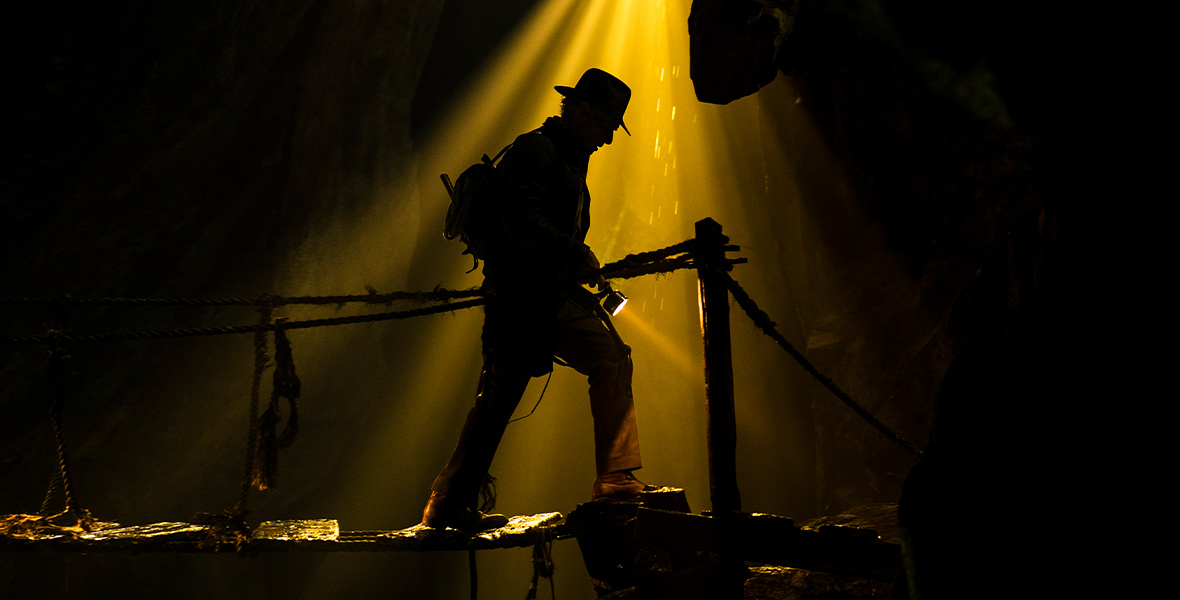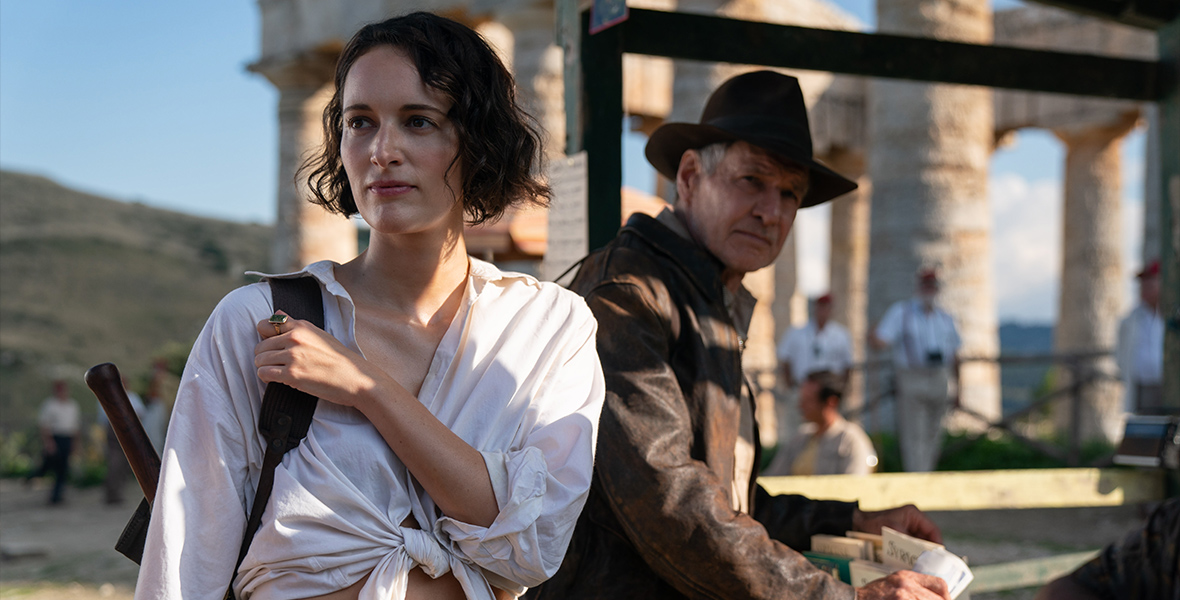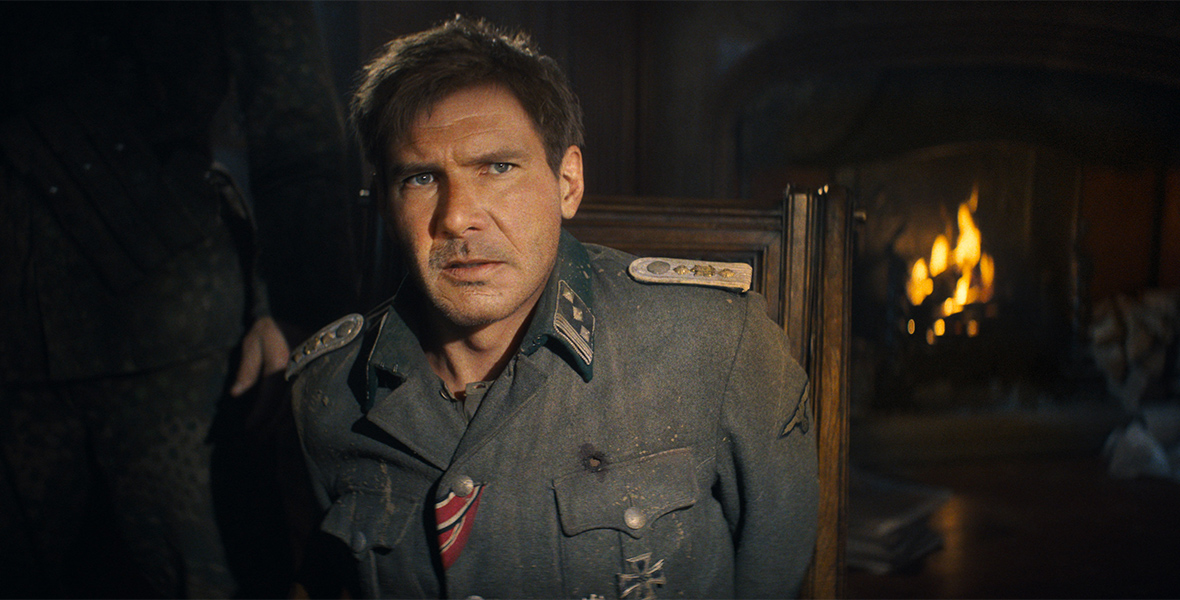By Zach Johnson
If adventure has a name, it’s Indiana Jones.
In Lucasfilm’s Indiana Jones and the Dial of Destiny, in theaters Friday, June 30, the whip-smart archaeologist returns for another thrilling, globe-trotting adventure—his last, in fact. It’s 1969, and Indy (Academy Award® nominee Harrison Ford) is at a crossroads. After teaching at New York’s Hunter College for more than a decade, he is now ready to retire and live a quieter life… alone. His plans change, however, when his estranged goddaughter, Helena Shaw (Emmy® Award winner Phoebe Waller-Bridge) turns up one day seeking a rare artifact that her father had entrusted to Indy years earlier: the Archimedes Dial, which is rumored to hold the power to find fissures in time. A skilled con artist, she then steals the Dial and plans to sell it to the highest bidder—which, of course, spurs Indy into action.
Naturally, he’s in for quite a ride—one that has arguably been a lifetime in the making. “Harrison loves this character as much as the audience, and he didn’t want to see it end,” says Lucasfilm’s Kathleen Kennedy, who, along with Frank Marshall, has produced every installment in the wildly popular movie franchise. “He kept asking, ‘Is there another story?’”
Not only would there be another story to tell, but there would be another storyteller, with James Mangold taking the director’s reins from Steven Spielberg, who now serves as an executive producer. “There are a lot of aspects of Jim Mangold’s filmmaking skill that I admire,” Ford says. “But as a storyteller, he’s got a particular perception, born of his own experience—an understanding. His ambition is consistent with the ambition that we’ve had all the way through this series of films: To create large-scale entertainment with a kind of wry humor and an emotional reality that engages the audience.”
Calling Mangold “an exceptional filmmaker,” Kennedy adds, “The minute Jim’s name came up, Harrison was already 100 percent on board. That meant a lot to me. It meant a lot to Steven. It meant a lot to Frank.”

Spielberg knew Mangold would do the story justice. “He was a director who shared my sensibilities about editing, pacing, character development, balancing scenes,” explains Spielberg, who also directed Indiana Jones and the Raiders of the Lost Ark (1981), Indiana Jones and the Temple of Doom (1984), Indiana Jones and the Last Crusade (1989), and Indiana Jones and the Kingdom of the Crystal Skull (2008). “I thought, ‘If I don’t do another Indiana Jones movie, James Mangold should.’”
Ford, Kennedy, and Marshall agreed—and so, they reached out to Mangold, a longtime fan. For Mangold, seeing Raiders of the Lost Ark on opening day in 1981 was an experience he had never forgotten—and he knew the character’s story wasn’t quite done. “Indiana Jones is a character that always surprises us. He can be selfish, he can be empathic, he can be brave, he can be a coward. And Harrison holds all these contradictory elements together,” he says. “Indiana Jones is not a Greek hero on Mount Olympus; he’s a very human character. I think all his eccentricities and anxieties and neuroses and foibles are part of his appeal. But he does have a superpower, and it’s that he’s incredibly lucky.”
Indy will need all the luck he can get as he tries to retrieve the Dial and keep it out of the hands of Dr. Jürgen Voller (Mads Mikkelson), a former Nazi now working as a physicist in the U.S. space program, whose horrifying scheme could change the course of world history.

Of course, in 1969, no one believes in heroes like Indiana Jones anymore—perhaps not even Indy himself. And so, as Jez and John-Henry Butterworth drafted the story, along with David Koepp and Mangold, they doubled down on the idea of telling the story of a hero at sunset. “The obvious challenge is that you’re returning to a genre without re-casting,” Jez says. “You’ve got the same actor who was playing this in his 30s playing it in his late 70s. I think that what had been perceived perhaps as a disadvantage was all the advantage. You had to absolutely run with the idea that what happens toward the end of people’s stories [can be just as fascinating] as what happens at the beginning of them. It started to feel authentic, and it gained a reality that was playable. If you embrace the opportunity, all sorts of storytelling doors open up.”
This notion inspired Ford, who calls it “very bold, very exciting, very courageous” storytelling. “We haven’t avoided the fact that Indy has aged 40 years over the period we’ve been telling his story; we’ve embraced it,” he explains. “We faced the challenges he faced, and we’ve brought a real humanity and warmth to the story.”
“The Indiana Jones we meet in 1969 is the result of the experience that we’ve had with him throughout the other films,” Ford continues. “This is what happens when you’re a broken- down archaeologist/professor, you’re frustrated in your career, it’s your last day on the job before retirement, and you maybe occasionally have a drink in the middle of the day. He’s dispirited, he’s cynical, and he’s hurt, but the circumstances that are about to befall him lead to a great adventure in which there is a degree of redemption—and renewal, as well.”


